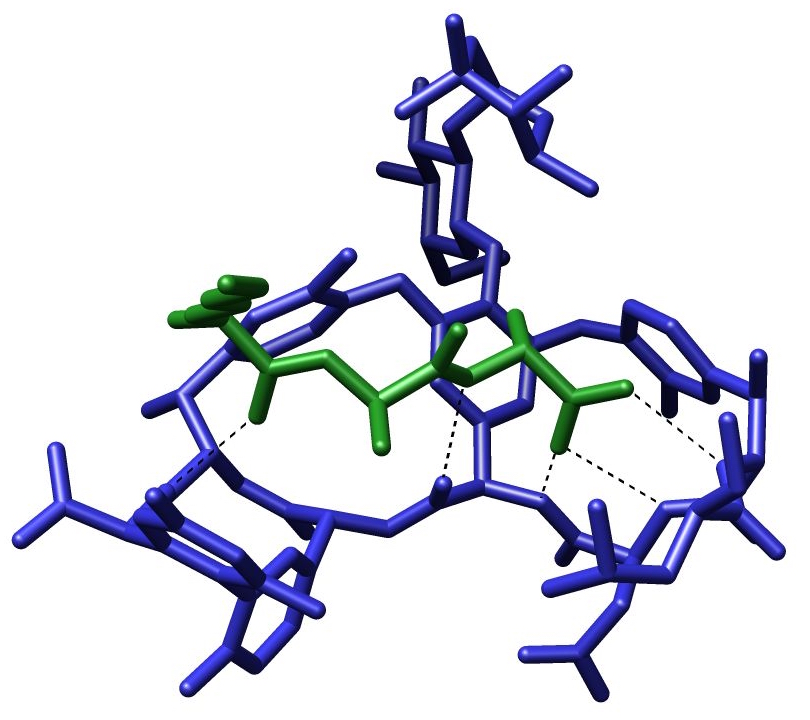Molecular recognition

The term molecular recognition refers to the specific interaction between two or more molecules through noncovalent bonding such as including hydrogen bonding, metal coordination, hydrophobic forces, van der Waals forces, pi-pi interactions, and/or electrostatic effects.[1] The host and guest involved in molecular recognition exhibit molecular complementarity.[1][2]
Biological systems
Molecular recognition plays an important role in biological systems and is observed in between receptor-ligand, antigen-antibody, DNA-protein, sugar-lectin, RNA-ribosome, etc. An important example of molecular recognition is the antibiotic vancomycin that selectively binds with the peptides with terminal D-alanyl-D-alanine in bacterial cells through five hydrogen bonds. The vancomycin is lethal to the bacteria since once it has bound to these particular peptides they are unable to be used to construct the bacteria’s cell wall.
Supramolecular systems
Chemists have demonstrated that artificial supramolecular systems can be designed that exhibit molecular recognition. One of the earliest examples of such a system are crown ethers which are capable of selectively binding specific cations. However a number of artificial systems have since been established.
Static vs. dynamic
Molecular recognition can be subdivided into static molecular recognition and dynamic molecular recognition. Static molecular recognition is likened to the interaction between a key and a keyhole; it is a 1:1 type complexation reaction between a host molecule and a guest molecule to form a host-guest complex. To achieve advanced static molecular recognition, it is necessary to make recognition sites that are specific for guest molecules.
In the case of dynamic molecular recognition the binding of the first guest to a the first binding site of a host affects the association constant of a second guest with a second binding site.[3] In the case of positive allosteric systems the binding of the first guest increases the association constant of the second guest. While for negative allosteric systems the binding of the first guest decreases the association constant with the second. The dynamic nature of this type of molecular recognition is particularly important since it provides a mechanism to regulate binding in biological systems. Dynamic molecular recognition is also being studied for application in highly functional chemical sensors and molecular devices.
External links
References
- ↑ Lehn, J.M. (1995). Supramolecular Chemistry - Concepts and Perspectives. New York: VHC.
- ↑ Introduction: Molecular Recognition Samuel H. Gellman, Chem. Rev.; 1997; 97(5) pp 1231-1232. doi:10.1021/cr970328j
- ↑ Positive Allosteric Systems Designed on Dynamic Supramolecular Scaffolds: Toward Switching and Amplification of Guest Affinity and Selectivity Seiji Shinkai,* Masato Ikeda, Atsushi Sugasaki, and Masayuki Takeuchi Acc. Chem. Res., 2001, 34, 494 -503 doi:10.1021/ar000177y S0001-4842(00)00177-1